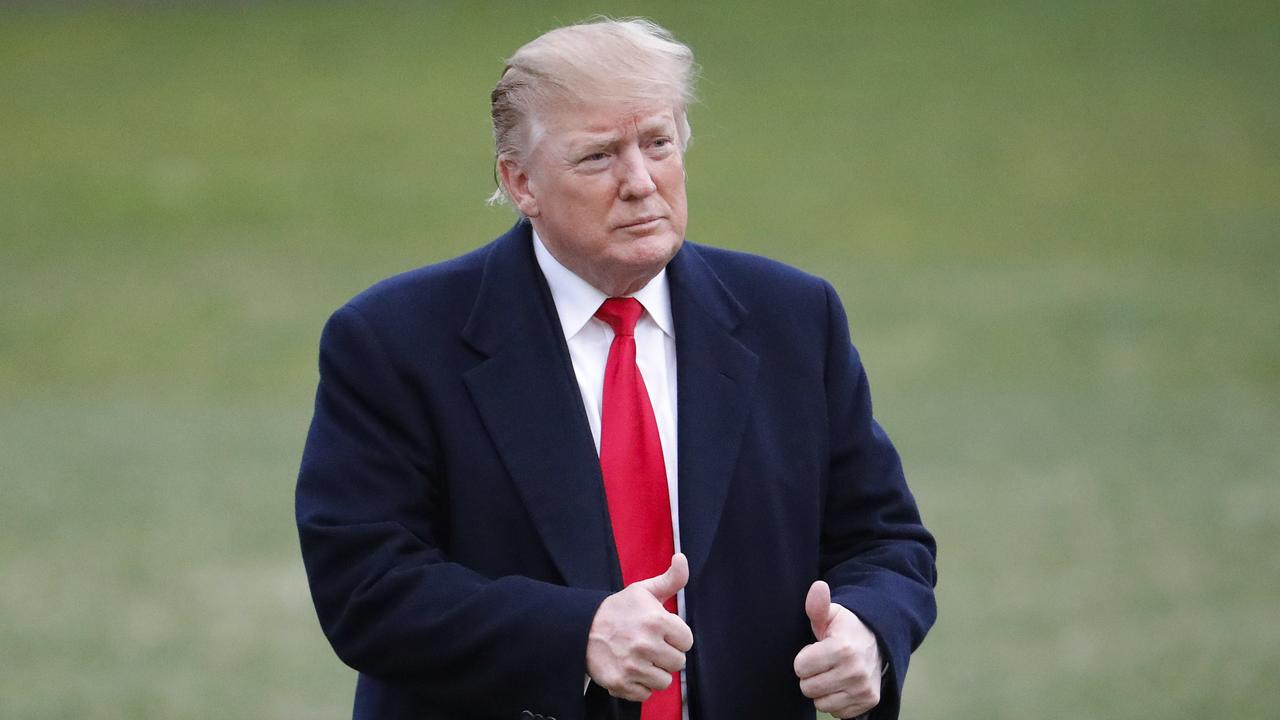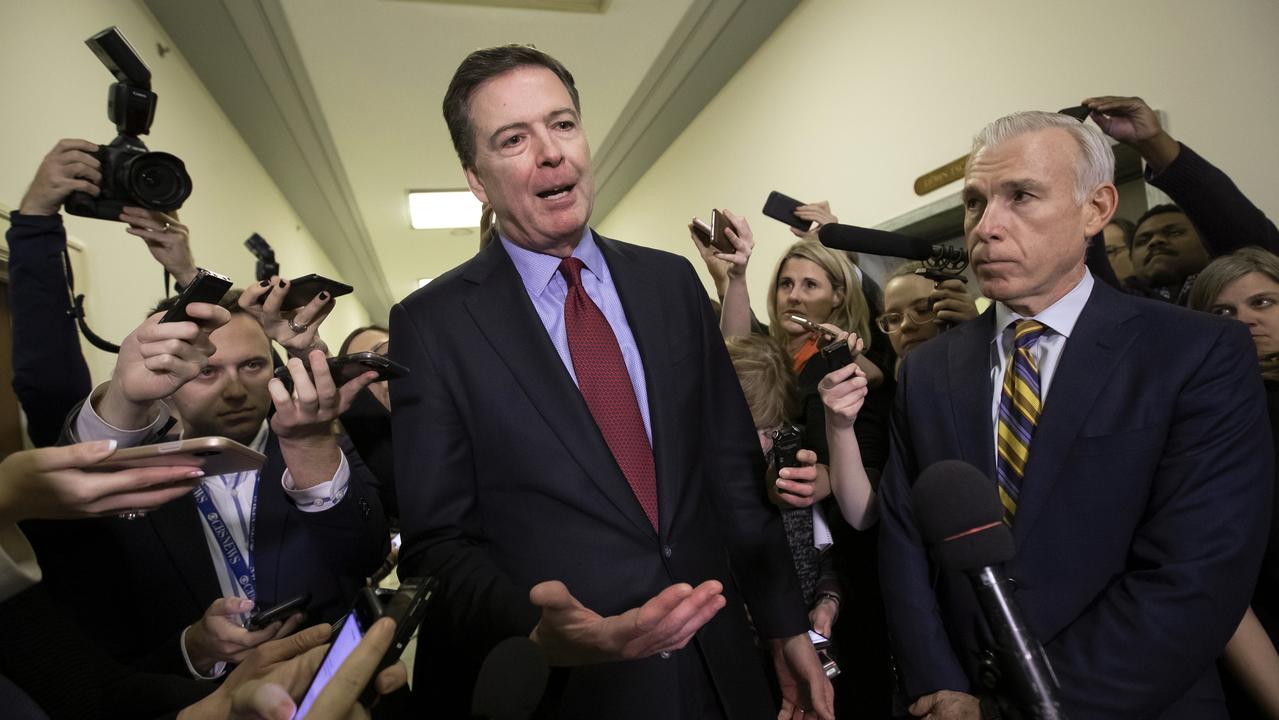Donald Trump faces Asia’s new world order
Donald Trump faces a critical challenge on his first tour of Asia.

Shinzo Abe’s resounding electoral victory is reverberating awkwardly around a jumpy region already on constant high alert thanks to the unremitting aggression of Kim Jong-un’s North Korea.
This sets the stage for Donald Trump’s first visit to Asia as US President early next month, an extended tour that would be challenging at any time but now demands especially brilliant diplomacy and leadership if it is to succeed in enhancing American respect and authority.
Abe is now armed with the two-thirds parliamentary majority he needs to change the country’s pacifist constitution, to recognise formally the role of the Japan Self-Defence Forces, as the military is titled. While long flagged, this will cause countries that Japan invaded in the 20th century — especially South Korea and China — to ramp up their antagonistic rhetoric.
But the constant background drumbeats of that more pressing threat from North Korea, the mutual danger, may provide an opening for Abe to calm some of his neighbours’ concerns, with adroit diplomacy.
North Korea’s firing of two ballistic missiles over Japan in the past few weeks provides Abe with a level of justification for beefing up his military that few can gainsay.
Most Japanese voters, in giving his government a third four-year term, said that the economy was their prime concern — and they were prepared to give Abe yet more time to pursue his ambitious “Abenomics” program to revive it.

But Abe’s resolute approach to North Korea was the element that clinched the crucial extent of the win for his centre-right Liberal Democratic Party and its Buddhist coalition partner, Komeito.
In party political terms, the victory was made much easier by the opposition being split between the centre-right Party of Hope, led by popular Tokyo governor Yuriko Koike, and the centre-left Constitutional Democratic Party, led by former Democratic Party deputy leader Yukio Edano.
Abe stressed during the campaign that he “will not waver” in the face of North Korean threats.
Immediately after Sunday’s victory he said “my imminent task is to firmly deal with North Korea”. But not, at this stage anyway, militarily. “Strong diplomacy is required,” Abe said.
Article 9 of the largely US-drafted 1947 Japanese constitution says: “Aspiring sincerely to an international peace based on justice and order, the Japanese people forever renounce war as a sovereign right of the nation and the threat or use of force as means of settling international disputes … Land, sea and air forces, as well as other war potential, will never be maintained. The right of belligerency of the state will not be recognised.”
Despite this, Japan began to build military capability in 1954 in the face of rising regional insecurity, as the Cold War became more bitter and communist expansion threatened.
Abe wishes to recognise this reality by rewording the constitution. That requires majority support in a referendum, following approval by two-thirds of the parliament, for which he has now secured the necessary support in both lower and upper houses.
He already has succeeded in passing legislation enabling Japanese forces to be deployed internationally to aid allies.
He wanted, he said following his victory, “to deepen debate” about the constitutional change, “and have as many people as possible agree”.
Japan has the eighth highest military budget in the world — $59 billion last year and 1 per cent of gross domestic product — with about 247,000 active personnel. Australia’s defence budget is $35bn, 1.9 per cent of GDP, with 58,000 active personnel.
John Kuehn, a military history professor at the US Army Command General Staff College, has said that “pilot for pilot, ship for ship, Japan can stand toe to toe with anybody”.
Japan’s defence budget has increased for five years in a row under Abe, who now wants to spend heavily on upgrading missile defence systems. The whole region rapidly is ramping up its military spending, with Abe warning that North Korea could target Japan with missiles laden with deadly sarin gas.
While military surprises keep pouring from Pyongyang, there can now be no great political surprises in the region. The pattern is set. All the key actors have been elected or have had their authority reaffirmed this year — or in Kim’s case last year when he called a Workers’ Party congress to formalise his dictatorial powers.
South Korea’s centre-left President Moon Jae-in began his five-year term in May; China’s President Xi Jinping is being confirmed today as his communist party’s dominant figure, its general secretary, for a further five years at least; and now Abe’s government has four more years in office — though he also needs to be re-elected as leader of his own party for a further three-year term, next year, now a mere formality.
All are ambitious and able, and have their countries firmly behind them. The scope for collisions as leaders flex military muscles to cement their legitimacy at home is thus less than it is when they face uncertain political futures.
But the region will continue to provide rich markets for arms sales as all countries seek to modernise their militaries to ensure they can counter disturbing new scenarios, especially from a North Korea that spends an enormous 22 per cent of its — admittedly limited — national budget on its military.
Japan has begun, under Abe, to develop its own defence industry, from research through to the operational level, and is already making forays into the international market, as Australia witnessed when it was runner-up to the winning French bid to build the new submarine fleet.
Its troops have begun to build international experience through deployments for peacekeeping, in Mozambique, East Timor, Iraq, Nepal and South Sudan — the latter ongoing.
Security links with Australia have rapidly deepened since being elevated three years ago to a “special strategic relationship”. Earlier this year, the countries signed an acquisition and cross-servicing agreement to exchange support at various levels between their militaries, including ammunition.
In China, Xi also has focused heavily, during his first five-year term, on modernising the structure of the military, including by giving more weight to the navy and air force, reducing the number of its infantry while enhancing overall technical capacity, and promoting young leaders while retiring — or even charging with corruption — many top officers of the older generation.
During his 3½-hour opening address to the five-yearly party congress that closes today, Xi spoke of realising the Chinese dream of building a powerful military to obey the party’s command, and which can fight and win.
“A military is built to fight,” he said. Improved combat capability would enable the military to “manage crises and deter and win wars”.
South Korea’s Moon, while often characterised as a “dove” — and who constantly urges diplomatic rather than military solutions for the stand-off with North Korea — also is beefing up his country’s defence systems and has introduced the American-managed Terminal High Altitude Area Defence anti-missile system that China and Russia bitterly complain can scan their own military preparedness.
Moon, himself a former special forces paratrooper, has begun to build a promising working relationship with Abe following a long period of strong antagonism by South Korea towards Japan, springing from a popular view that it has failed to apologise sufficiently clearly for its 35-year occupation of the Korean peninsula.
Several factors are helping to push South Korea and Japan together, however uneasily. There is the threat of North Korea, but also China’s unofficial but palpable sanctions against South Korea to punish it for the THAAD deployment, and China’s global power ambitions. The Xinhua News Agency says Xi is signalling that “the 21st century is likely to see capitalism lose its appeal while the socialist movement, led by China, rapidly catches up”.
Abe also has been making moves towards improving relations with China.
Japan now is reviewing its original decision not to participate in the new Beijing-led Asian Infrastructure Investment Bank.
And Abe recently became the first prime minister in 15 years to attend China’s National Day celebration in Tokyo, with his Foreign Minister Taro Kono — an event also marking the 45th anniversary of the normalisation of Japan-China relations.
Into this rich brew of military and diplomatic complexities must be added the still-remote prospect of the nuclearisation of the whole region.
It is almost certain that Japan, South Korea and possibly Taiwan are all technically equipped to develop and build nuclear weapons for themselves, if they should feel that the US military shield, which for more than a half-century has helped to protect all three, is no longer adequate technically or politically. Such a shift would be Beijing’s biggest nightmare, as well as that of many others in the region, as proliferation multiplies the potential triggers for disaster.
Enter Trump.
He will be in the region for 10 days. Appropriately, he flies via Hawaii for a briefing by US Pacific Command, with its massive Asian analytical expertise.
Trump arrives in Japan on November 5, then visits South Korea, followed by China.
Then it’s on to the two big annual regional summits: the Asia-Pacific Economic Co-operation forum in Danang, Vietnam, followed by a brief bilateral meeting in Hanoi with the Vietnam leadership; and the Association of Southeast Asian Nations in Manila, where he will also participate in the 50th anniversary dinner for the organisation originally founded to counter Asian communist incursion.
He also will hold talks with controversial Philippines leader Rodrigo Duterte.
This gruelling schedule will require considerable disciplined diplomatic skill to regain ground lost by the US in the region resulting from Trump’s abandonment of the Trans-Pacific Partnership that was to have provided US allies in Asia — including Australia — with a new economic and strategic rallying point in the face of China’s rise towards regional supremacy.
Trump will need to convince Abe — the de facto leader of those American allies in the region — that, despite his rejection of the TPP, the US remains a dependable power, one that has a coherent and unified strategy to meet the challenge from North Korea despite the public stoushes between himself and his Secretary of State Rex Tillerson.
He needs to persuade Xi that Tokyo’s military muscling-up presents no danger to China and that, conversely, a more “normalised” and confident Japan will help deter North Korea from fatal adventurism — from which China, with its 1420km border, would suffer especially grievously.
Perhaps the most important challenge of the trip will be to secure Xi’s wholehearted support for defusing the North Korea threat, in line with Washington’s vision of how this might be accomplished. This is predicated, of course, on the US security establishment, including its commander-in-chief, agreeing on such a program.
And Trump needs to convince Moon, to secure his full backing too, that he will not order an attack on North Korea that would result in the massive contingent casualties feared in South Korea.
But in strategic terms, the striking Abe victory this week serves to increase the “known knowns” and to diminish the “unknown unknowns”, as former US defence secretary Donald Rumsfeld described them.




To join the conversation, please log in. Don't have an account? Register
Join the conversation, you are commenting as Logout